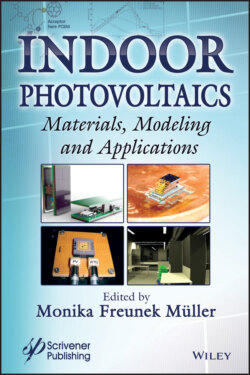Читать книгу Indoor Photovoltaics - Группа авторов - Страница 19
2.2 Kinetic Energy
ОглавлениеKinetic energy can be found in many places in indoor environments, often in the form of vibrating objects or motion from humans and machines. Besides which, there is often flow from both natural and technical sources, such as air or liquid flow streams within buildings, and from air conditioning plants. Amongst the most classic electric converters using kinetic energy as incoming energy are turbines, and piezoelectric generators in forms of sheets.
Kinetic converters transfer oscillations to a mass. Its movements relative to the supporting structures are coupled back under use of the piezoelectric, inductive or capacitive effect onto an electric system. There are various geometries and designs of converters. Reviews, modeling and research
work include the work of Mitcheson et al., Roundy et al. or Safaei et al. [11–14]. Kinetic converters are already available on a commercial scale, with examples being Kinetron or ReVibe [15, 16]. These converters mostly cover industrial applications, including rail and helicopter flight assistance.
The following subsections introduce simple general models and available power densities for some of the indoor applications.
